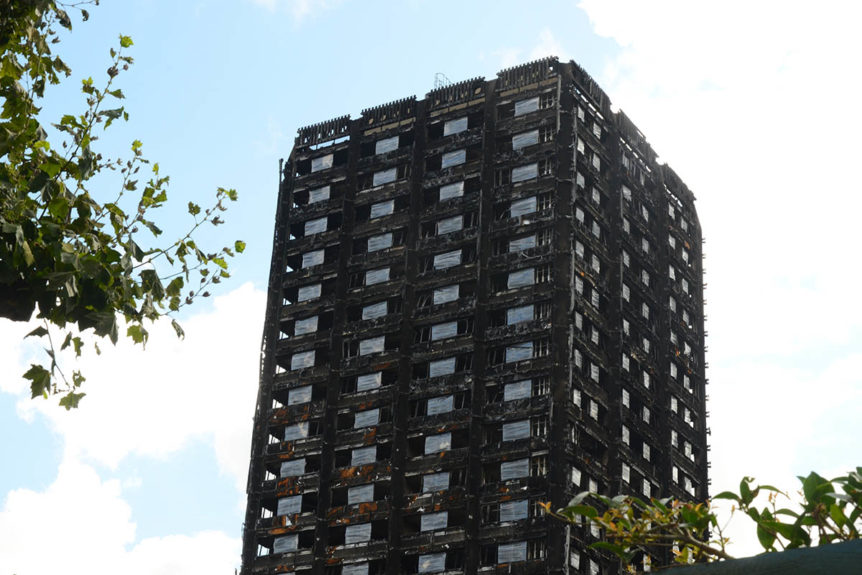In the summer of 2017, the UK was gripped and horrified by the tragedy and voracity of London’s Grenfell fire, which left unprecedented numbers homeless, orphaned and entire families killed. The UK had seen nothing like it in modern history, and hearts broke everywhere over the countless stories of pain, heroism and kindness. It’s charred remains a haunting reminder of the price of irresponsibility.
“Rank does not confer privilege or give power. It imposes responsibility”. Peter Drucker
With great power comes great responsibility – and as landlords, we are responsible for the health, safety and livelihood of the people we provide accommodation for.
But the rules and regulations landlords have to follow seem to be ever growing and changing, which means staying up-to-date and compliant can be anxiety-inducing or overwhelming, especially when you have a demanding full-time job or run a business in a different industry, and property is your ‘on-the-side’ business.
So, in this two-part series, we attempt to help you understand your obligations so you can remain compliant with the law.
Part 1 SAFETY CHECKS
Legal Obligations and Best Practise Guidelines – At a Glance

Gas Safety Certificate
Any gas central heating system or appliance will need to be certified as safe to use under The Gas Safety Regulations 1998. Inspections must be done prior to a tenant moving in and annually thereafter. SenecaRooms can arrange for the inspection to be carried out by a Gas Safe registered engineer who will issue a Gas Safety Certificate. It is also a legal requirement that a copy of the certificate is given to the tenant within 30 days.
Smoke alarms
Any property built after 1992 should be fitted with mains operated smoke detectors and alarms on each floor as required under building regulations. It is now also a legal requirement to install a smoke alarm on every floor of a rental property.
HMO propertjes will need either a Grade A or Grade D hard-wired alarm system. Consult your local council and the LACORS Fire Safety Guide for full details, but a Grade D system is typically accepted in house shares of a single joint tenancy and no locks on internal doors. A grade A system is required where there are individual locks on internal doors and individual tenancies. At the time of publishing, the number of floors and number of tenants in the building also determine whether a wired in alarm is needed or not, but there is talk of the rules changing to cover all HMO buildings (irrespective of number of floors) in the near future. We would suggest being prepared to install wired-in alarms in all HMO’s.
The system must be tested as in good working order at the start of every tenancy – a professional inventory check-in report should record if smoke alarms were present and in working order at the start of the tenancy.
Grade D systems need to be tested monthly, and safety certificates issued annually.
Grade A systems need to be tested weekly, and safety certificates issued every 6 months.
Carbon monoxide alarms
Carbon monoxide (CO) is a colourless, odourless and tasteless poisonous gas. Best practice is to install a carbon monoxide alarm but these must be installed in any room with a solid fuel installation e.g. a wood burning stove. They should also be tested to ensure they are in good working order at the start of every tenancy – the check-in report should record this safety check.
Electrical safety
The Electrical Equipment (Safety) Regulations 1994 state that anything electrical within the property, or anything that you supply as part of the fixtures and fittings, should be up to current electrical safety standards and safe to use. Landlords must also make sure that the electrical system is safe e.g. sockets and light fittings.
If you let your property as a HMO then you must carry out safety checks on electrical installations every five years by a NICEIC accredited electrician.
Portable Appliance Tests (PAT) must also be conducted to ensure all supplied appliances with plugs are safe to use.
SenecaRooms can arrange for a qualified and vetted contractor to carry out a Portable Appliance Test (PAT) or Electrical Installation Condition Report (EICR).
Furniture & furnishings
Furniture manufactured today must have a safety label stating it meets the Furniture and Furnishings (Fire) (Safety) Regulations 1988. It is a good idea to check that sofas, beds, bedheads, cushions, pillows and furniture covers still have the relevant fire safety tag attached. Furniture manufactured prior to 1950 is exempt but it is best practice to remove vintage, antique or sentimental items from a property.
Legionnaires & safety checks
Under the Control of Substances Hazardous to Health Regulations 1989 landlords who provide residential accommodation have a legal duty to consider, assess and control the risks of exposure to Legionella to their tenants. All water systems require an assessment of the risk and landlords can carry out this assessment themselves if they are competent, or employ somebody who is. In most residential settings a simple assessment may show that the risks are low and no further action may be necessary.
Housing Health and Safety Rating System
The Housing Health and Safety Rating System (HHSRS) have produced a guide for Landlords on how to assess potential risks presented by different hazards that typically occur in properties. If you are not certain of what is considered to be a hazard which requires urgent attention vs a hazard which is not urgent, the guide will help to clarify it for you. It is considered best practise to regularly inspect rental properties to assess and rectify any repairs and hazards.
Resources
LACORS Fire Safety Guide
(http://www.cieh.org/library/Knowledge/Housing/National_fire_safety_guidance_08.pdf)
Landlord’s Guide to HMO Licensing
(https://www.gov.uk/government/uploads/system/uploads/attachment_data/file/15652/HMO_Lic_landlords_guide.pdf)
The Management of Houses in Multiple Occupation Regulations 2006
(https://www.landlords.org.uk/sites/default/files/librarypdfs/1/Licensing/HMO_Licensing_Miscellaneous_Regulations.pdf)
Housing Health and Safety Rating System – Guidance for Landlords and Property Related Professionals
(https://www.gov.uk/government/uploads/system/uploads/attachment_data/file/9425/150940.pdf)
Legionnella and Landlord’s Responsibilities
(http://www.hse.gov.uk/legionnaires/legionella-landlords-responsibilities.htm)

